Understanding and preventing common walking injuries
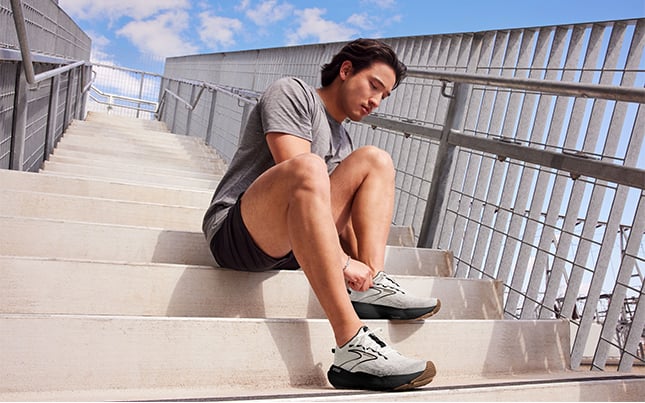
Walking is a low-impact, low-intensity, and easily accessible form of exercise that helps people of all abilities maintain healthy lifestyles. Even so, it’s smart to take a few precautions before, during, and after your walks.
Fortunately, you’re in good hands (and shoes) when you partner with Brooks Running on your wellness journey. Our comprehensive guide will show you how to help prevent the most common walking injuries—from shin splints to Achilles tendinitis—focusing on the benefits of targeted exercises, appropriate footwear, and mindfulness.
Jump to section:
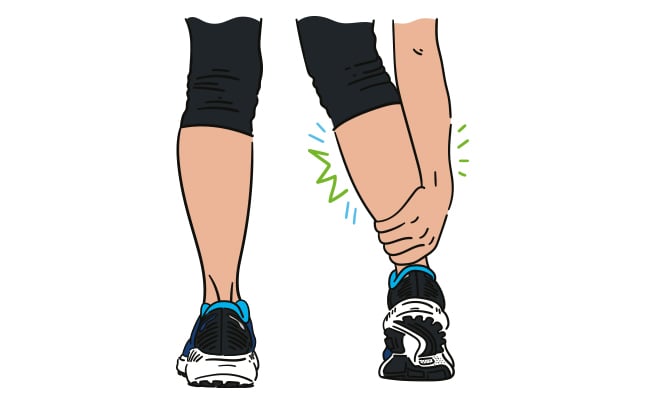
Walking injuries and preventative measures
Although walking is the quintessential low-impact exercise, it can still lead to injuries—some minor, some major—if not carried out with appropriate measures. According to NASM-certified personal trainer Hannah Dooley, some of the most common reasons walking injuries occur include “wearing the wrong shoes or not rotating the shoes worn, having a lack of lower body strength and flexibility, and traumatic injury, such as an ankle sprain.”
Understanding these injuries and their prevention techniques can keep you on track to maintain your walking routine without discomfort or pain. So, let’s get started by exploring some of the most common walking-related injuries, their causes, and how specific preventative strategies can help.
1. Shin splints and the power of foam rolling
Shin splints, characterized by throbbing or aching shins, are common among walkers who tread on hard surfaces or increase their distance abruptly. One preventative measure is foam rolling, a type of self-myofascial release that can soothe inflamed tissues around your shinbone and alleviate muscle tightness.
Our Adrenaline GTS can also help prevent shin splints with its GuideRail ® technology. By offering holistic support for the entire foot, it significantly reduces the strain and impact on your lower legs and shins.
2. Plantar fasciitis and the importance of shoe design
Plantar fasciitis is an inflammatory condition that affects the thick band of tissue known as the plantar fascia. This tissue connects your heel bone to your toes, providing arch support. When the plantar fascia is subjected to excessive strain, it can become inflamed, causing a sharp, stabbing pain, often felt most acutely in the morning. Overpronation, where your foot rolls inward excessively as you walk or run, is a common cause of plantar fasciitis.
Preventing plantar fasciitis involves strategies that reduce strain on the plantar fascia. This includes maintaining a healthy weight, avoiding high heels and flip-flops, and selecting the right walking shoes.
At Brooks, we've designed Ariel (for women) and Beast (for men) with plantar fasciitis prevention in mind. These models feature our Extended Progressive Diagonal Rollbar technology, which is a support system for your entire body. It strategically positions arch support to guide and keep your body in its natural path of motion. This minimizes strain on your plantar fascia, mitigating the risk of developing plantar fasciitis.
3. Achilles tendinitis and the role of cushioning
Achilles tendinitis results from inflammation of the Achilles tendon, the band of tissue connecting your calf muscles to your heel bone. This often occurs when the tendon is subjected to excessive stress over time, especially in walkers who suddenly increase their speed or distance, walk on hilly terrain, or don't allow adequate recovery time between walks.
The key to preventing Achilles tendinitis is minimizing stress on the tendon. This can be achieved through regular calf strengthening and stretching exercises—such as standing calf raises—increasing walking distances gradually, and choosing walking shoes with ample heel cushioning.
The Glycerin and Glycerin GTS models from Brooks are designed with Achilles tendinitis prevention in mind. The former is a neutral running shoe while the latter offers support, but they both feature DNA LOFT cushioning for a plush feel underfoot and smoother transitions, reducing the impact on your Achilles tendon. This soft, luxurious cushioning adapts to your stride, distributing pressure evenly across your foot, making Glycerin an excellent choice for those looking to protect their Achilles tendon .
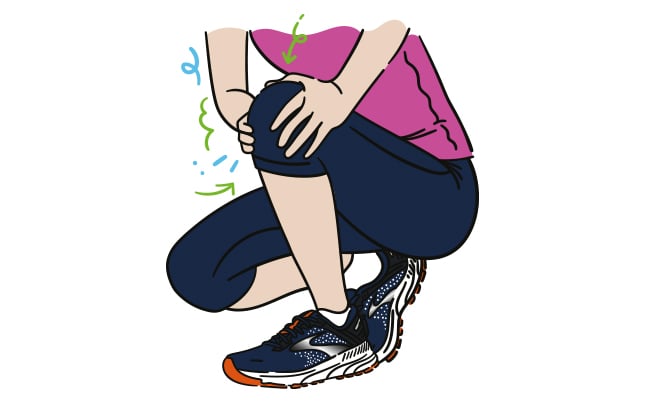
Bulletproof knees: Your defense against knee pain
Knee pain, such as patellofemoral pain syndrome and iliotibial band (IT) syndrome, often occurs due to overuse or biomechanical imbalances. Prevention starts by “strengthening your lower body and core muscles for injury-free walking,” says Hannah. “Perform lunges, squats, glute bridges, planks, and bird dogs.”
More specifically, consider lunges, step-ups, and leg presses for quads; hamstring curls and deadlifts for hamstrings; and hip bridges and side-lying leg lifts for your hip muscles. Complement these with balance exercises like single-leg stands and yoga poses to enhance knee stability.
Bulletproof knees also require the right footwear. Our Adrenaline shoes provide exceptional knee-friendly support through a series of innovations, including GuideRails®, which keep excessive movement in check to reduce strain on the knees.
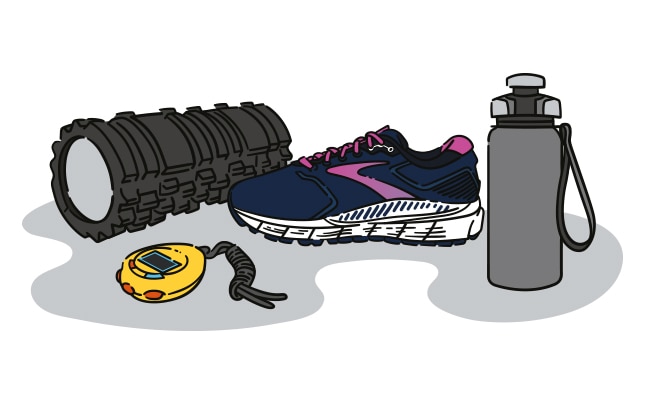
Mindful walking: Stride towards mental health and fewer injuries
Mindful walking, which entails focusing on each step and breath, encourages you to listen to your body and identify discomfort early. It can reduce stress, increase focus, and lessen the likelihood of injuries from distraction.
This practice starts with focusing on your gait. Notice how your foot rolls from heel to toe, the rhythm of your stride, the gentle swing of your arms. Observing these details keeps you present, minimizes strain, and enhances your walking efficiency. To help you remain mindful, find somewhere safe and peaceful to walk and resist the urge to look at your phone or listen to music. Stay in the moment and use all your senses to take in everything around you.
A supportive walking shoe like Glycerin can enhance your mindful walks. Its responsive yet cushioned design increases your connection with the ground, helping you stay focused on each step.
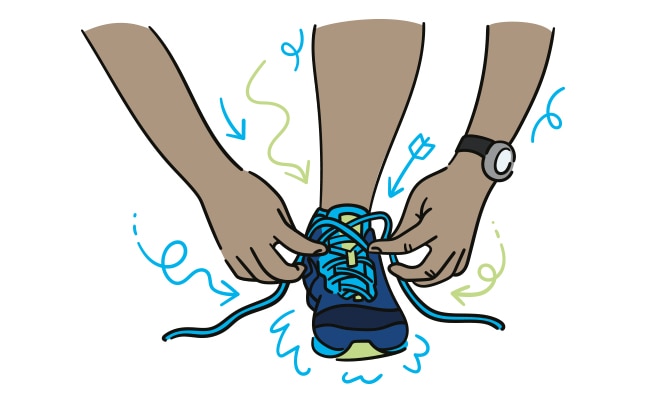
These shoes were made for walking
At Brooks, we believe in the power of the right shoes. Our shoes are designed with advanced technologies to provide superior support, cushioning, and stability, reducing injury risk and enhancing your walking experience.
Features a walker should look for when shopping for walking shoes include maximum cushioning—such as that found in the Brooks Glycerin—durability, and good support and traction.”
By choosing Brooks, you are choosing scientifically tested footwear that’s trusted by athletes, trainers, and enthusiasts worldwide. Incorporating our shoes into your walking routine, alongside the mindful and preventative practices above, can pave the way for a safer, more enjoyable walking journey. All that’s left to do is get out there and put one foot in front of the other. Happy walking!
Shop this article
This is a carousel. Use next and Previous buttons to navigate.
CONTRIBUTING EXPERT
Hannah Dooley
NASM-certified personal trainer, Orangetheory Fitness Coach, and Precision Nutrition Level 1 Certified Coach
Hannah has had a love and passion for running, walking, and exercise for as long as she can remember. She played college soccer at UT Chattanooga for a year before a career-ending injury, then went on to graduate from Tennessee Tech University with a degree in Exercise Science. An NASM-certified personal trainer and Orangetheory Fitness Coach, Hannah and her endurance athlete husband hope to share their love of walking, running, and all things exercise with their two little boys.
Disclaimer: Our writer's advice is intended for informational or general educational purposes only. We always encourage you to speak with your physician or healthcare provider before making any adjustments to your running, nutrition, or fitness routines.
